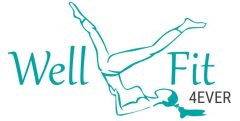You might recognize the feeling, when there is a pain in your arm that you really can’t explain, at times when you don’t know why. What is it and what can you do about it? You just might have Tennis Elbow.
Tennis Elbow is a condition when you have injured or overused the tendons of your forearm around the outside of the elbow. Tennis Elbow is a euphemism; you don’t have to play tennis to suffer Tennis Elbow.
The medical term for it is Lateral Epicondylitis.
As I am writing this post, I am on week four with Tennis Elbow (the result of an injury). I have recovered about ninety percent. I have seen clients with this condition, but this is my first personal experience. I have to say it is quite an annoying and challenging condition to deal with, especially because it usually happens to the dominant arm.
I have talked with clients who have had this same condition and as it turns out we all experience similar symptoms. The pain is not always there. It comes while performing certain movements. If you like cooking as I do, you will feel the most discomfort while you are in the kitchen. If you wonder whether you have Tennis Elbow see if you have –
Symptoms of Tennis Elbow:
- Pain when lifting a heavy object with palm facing downward, like picking up a skillet.
- Pain when stirring food (while cooking).
- Loss of grip strength or very sore when squeezing something, such as picking up salad with a thong, squeezing the nozzle of a spray bottle, squeezing a lemon, etc.
- Pain when popping open a can.
- Very painful when you are twisting a lid to open a jar or bottle.
- Pain when you are pulling open a heavy door or pulling on a seat belt to buckle it.
- Sore when typing on a keyboard.
When you have Tennis Elbow avoid:
- Movements that aggravate the pain.
- Weight lifting (or similar exercise).
- Resistant exercises that involve the bending of the injured arm.
- Carrying a bag or heavy object in positions that require the injured elbow to bend.
Stretches that release Tennis Elbow:
- Straighten your arm, lock the elbow, spread your fingers apart and wiggle them.
- Straighten your arm in front of your body, lock the elbow, flex at the wrist with fingers pointing downward and curling in toward the body. You should feel tension on the affected area (your tendons are being stretched). Hold the stretch for a few seconds. From this position wiggle your fingers.
Do each stretch for a few seconds or for as long as it feels comfortable. Repeat frequently throughout the day.
Can I do Pilates when I have Tennis Elbow?
The answer is yes. You can definitely carry on with your Pilates practice with a bit of caution. Basically you want to rest the injured areas, which is only your forearm and elbow. There’s no need to skip your Pilates class.
If you attend Pilates classes, be sure to inform your instructor(s) about your Tennis Elbow so she/he can help you with appropriate modifications. Keep in mind not to rely one hundred percent on your instructor. The primary person who is responsible for your safety is YOU. You must know your contraindications and listen to your body. Don’t push yourself through exercises if you doubt the outcome; you may make the condition worse and delay your recovery time.
On that note, thinking back, my Tennis Elbow was on its way to recovery. During the second week after the injury I actually wasn’t sure I had Tennis Elbow; I thought I might have just overdone some arm exercises. During one of my classes that week I was feeling ‘pumped’ so I joined in with my students for a set of push-ups. You already know the outcome–more pain returned later that day and stayed on for another week. Totally not worth it!
To make it simple, remember to omit exercises that require the forearm to flex and extend against or with resistance.
Examples of Contraindicated Exercises:
- Biceps curls with resistance or weights
- Triceps press with resistance or weights
- Push-up
- Pull-up
- Forearm (elbow) plank
If there’s a full plank (straight arms) exercise included in your class that you really want to do (I know, it’s hard to resist) try it but for just a few seconds. If you don’t feel any pain, then you should be fine. If right away you feel pain, don’t continue, even though you might not feel any pain holding the plank. I do not recommend you to hold for longer than 15 seconds, not until all the symptoms have subsided.
Summary:
When you suffer from Tennis Elbow expect that the discomfort will last for days, weeks, or even months (depending on how much rest and stretching you practice). Allow the affected arm to rest. Avoid lifting, pulling and any movement that aggravates the pain. Do the two suggested stretches frequently through the day. Continue with your Pilates practice and other activities but keep these contraindications in mind.

